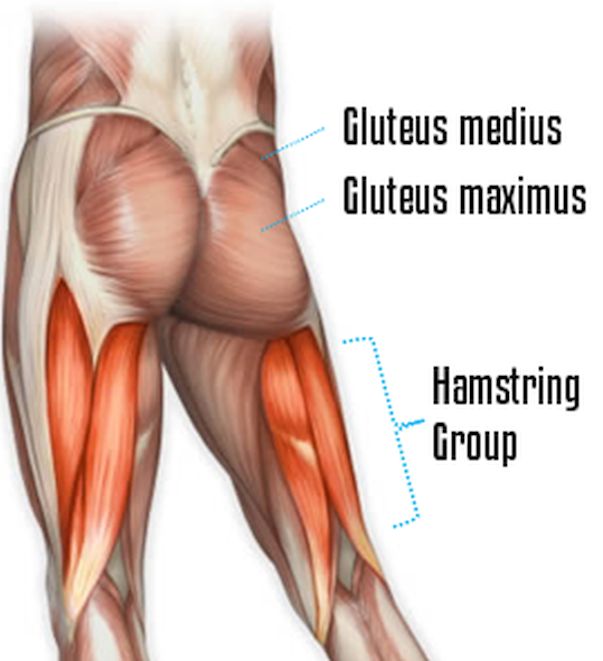The human body is a remarkable biological masterpiece, housing an intricate network of muscles that allow us to move, perform daily activities, and even excel in sports. But what is the biggest muscle in the human body?
While you might instinctively think of well-defined biceps or strong quadriceps, the actual answer might surprise you.
In this article, we will explore the largest muscle in the human body, unravel its significance, and delve into the role it plays in our everyday lives.
Table of contents
What Is The Biggest Muscle In The Human Body?
The largest muscle in the human body is the gluteus maximus, which is commonly known as the buttocks. The gluteus maximus is a powerful muscle located in the buttock region and plays a significant role in various physical activities, including walking, running, climbing, and maintaining an upright posture. It is not only essential for mobility but also for stability and support of the pelvic region and the trunk.
Also check out this content: How Tall is Jack Skellington? All the Facts and Details
What are the Functions of the Gluteus Maximus Muscle?
The gluteus maximus muscle serves several vital functions in the human body, making it an integral part of our musculoskeletal system. Some of its primary functions include:
Hip Extension
The gluteus maximus is responsible for the extension of the hip joint. Hip extension is the movement that allows you to move your thigh backward, such as when you stand up from a seated position, walk, run, climb, or jump.
This action is crucial for propelling your body forward during activities like walking and running.
Hip Lateral Rotation
The muscle also contributes to the outward rotation of the hip joint. This movement allows for actions like turning your leg and foot outward, which can be particularly important during activities that involve pivoting or changing direction.
Hip Abduction
The gluteus maximus assists in moving the leg away from the midline of the body. This action is called hip abduction and is involved in movements such as side leg lifts.
You should read: How Big is 5 Inches? 6 Items with Accurate Measurement
Stabilizing the Pelvis
The gluteus maximus plays a crucial role in stabilizing the pelvis when we are in an upright position. It helps maintain the alignment of the pelvis, ensuring that it doesn’t tilt or shift excessively during standing and walking.
Supporting the Trunk
In addition to its role in leg movement, the gluteus maximus provides support to the trunk when we are in an upright position. It helps keep the body balanced and prevents it from leaning too far forward.
Are there Common Issues associated with the Gluteus Maximus?
Yes, there are several common issues and conditions associated with the gluteus maximus muscle:
- Weakness and Atrophy: Weak or underdeveloped gluteus maximus muscles can result from a sedentary lifestyle or a lack of targeted exercise. Weak gluteus maximus muscles may lead to poor posture, gait abnormalities, and difficulty with movements like standing up from a seated position.
- Gluteal Amnesia: Prolonged periods of sitting or inactivity can lead to a condition known as “gluteal amnesia.” In this condition, the gluteus maximus muscles become less responsive and may not engage as effectively when needed, causing discomfort and potential issues with posture and movement.
- Lower Back Pain: Weak or underactive gluteus maximus muscles can contribute to lower back pain. They are part of the core and provide support to the lower back. When these muscles are not functioning optimally, it can lead to added stress on the lumbar spine.
- Hip Pain: Weak or unbalanced gluteus maximus muscles can lead to hip pain and discomfort. Conditions like hip bursitis or hip impingement may be exacerbated by poor gluteal muscle strength and function.
- Knee and Leg Issues: The gluteus maximus is involved in stabilizing the pelvis during movements, and weakness in this muscle can affect the alignment and stability of the knees and lower limbs, potentially leading to issues like patellofemoral pain syndrome or IT band syndrome.
- Overuse or Strain: Athletes and individuals who engage in repetitive activities like long-distance running or cycling may experience overuse or strain of the gluteus maximus. This can lead to pain and discomfort in the buttock area.
- Imbalance: Muscle imbalances between the gluteus maximus and other muscles, such as the hip flexors, can affect movement patterns and lead to compensatory movements that increase the risk of injury.
You should read: How Big is 5 Inches? 6 Items with Accurate Measurement
Conclusion
The gluteus maximus, often underestimated in its significance, is indeed the largest muscle in the human body. Beyond its aesthetic appeal, this powerhouse muscle plays a crucial role in enabling us to perform everyday tasks, maintain proper posture, and engage in physical activities. So, the next time you stand up, take a step, or sit down, remember the unsung hero – your gluteus maximus – working tirelessly to support your movements.
Frequently Asked Questions
The largest muscle in the human body is the gluteus maximus, commonly known as the buttocks. It is a powerful muscle that forms the bulk of the buttock region and plays a crucial role in various physical activities, including walking, running, and sitting.
The gluteus maximus has several vital functions. It’s responsible for hip extension, which is essential for movements like standing up from a seated position, walking, running, and climbing. Additionally, it helps to stabilize the pelvis and supports the trunk when we are in an upright position.
Yes, you can strengthen the gluteus maximus through targeted exercises. Squats, lunges, deadlifts, and specific glute exercises like hip thrusts and glute bridges are effective ways to build and tone this muscle. A strong gluteus maximus can improve posture, reduce the risk of injury, and enhance athletic performance.
Weak or underdeveloped gluteus maximus muscles can lead to a variety of issues, such as lower back pain, hip pain, and poor posture. Additionally, overuse or strain of this muscle can occur in athletes or individuals who engage in repetitive activities like long-distance running.
References
- loc.gov/everyday-mysteries– the biggest muscle in the human body
- healthline.com– the biggest muscle in the human body
- byjus.com– the biggest muscle in the human body
Recommendations
- 26 Legitimate Ways to Get a Costco Student Membership for Free
- What Age Do You Graduate High School?
- Which Group is a Primary Supporter of Hunter Education?
- How Tall is Trippie Redd? Everything About the Rapper
- How Tall is Jack Skellington? All the Facts and Details
- How Big is 5 Inches? 6 Items with Accurate Measurement






